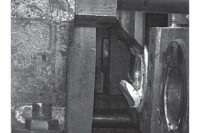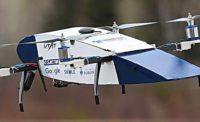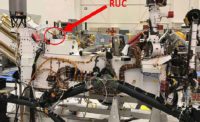Every year, more than 500,000 A3, A4, A5 and Q5 vehicles leave the production line at Audi AG’s largest plant in Ingolstadt, Germany. Interestingly, about the same number of people annually visit the company’s Audi Forum, located just across the street from the plant.
Only a small percentage of visitors go to the Forum to retrieve their new car. Most people go there to check out the company’s collection of skillfully restored classic cars, take part in a guided plant tour or attend a jazz concert.
The latest versions of all four models are built at Ingerstoldt, including the third-generation A3. Its redesigned body styles include three- and five-door hatchbacks, a four-door sedan and a two-door convertible.
Each A3 body moves along the plant’s assembly line on a walk-on, sliding platform. At the line’s first station, various measuring devices gather data to ensure proper body positioning for accurate automated door installation. For example, two LSIS 400i smart cameras (from Leuze electronic GmbH) on each side verify the exact position of the large and small hinge bolt holes for each door. Workers then manually mount doors on the body. Hatchbacks, hoods and fenders are installed at later stations.
“[Our] challenge was to find a [vision] system that could recognize the bolt holes with certainty from a great distance,” explains Dirk Kaufmann, engineer and automation technology planner for Audi. “It also [had to] check multiple holes simultaneously to minimize the number of devices.”
Kaufmann says Audi selected smart cameras because they provide object illumination, image processing, data storage and a display for viewing results in one unit. The company’s decision to use the 400i series, in particular, stems from the cameras’ Binary Large Object (BLOB) detection and Regions of Interest (ROI) capabilities.
By designating individual pixel groups as blobs, so to speak, BLOB enhances detection. The ROI feature enables a more-detailed view of these detected areas.
According to Kaufmann, both features ensure sharp pictures that are unaffected by reflections caused by the body’s shiny metal and threads. The cameras verify position of the unthreaded large bolt hole first, followed by the threaded small hole.
Nearly 30 cameras make up the 400i series, which feature a focal length of 8 or 16 millimeters and have a working distance of up to 1,900 millimeters. Inspection tasks include checking for part presence, type, position and orientation; and verifying finished assembly. The cameras offer omnidirectional reading of 1D and 2D codes along with code comparison.
Integrated interfaces (Ethernet, RS232, 8x digital I/O) eliminate the need for connector units. The cameras operate with any standard browser or display or via WebConfig, mount with dovetail or threaded holes, and are rated IP65 or IP67
For more information on smart cameras, call 248-486-4466 or visit





